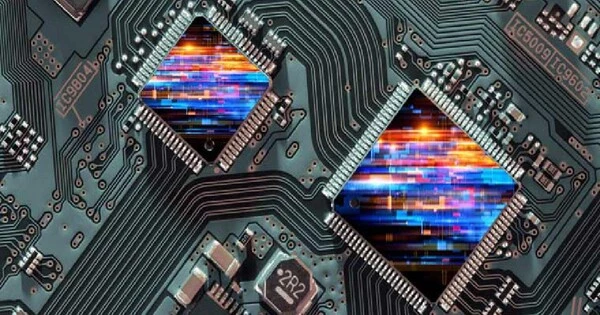Researchers in the United States have created crystal formations that the computing industry might incorporate into upgraded silicon transistors, allowing computers to be more energy efficient.
Computers are becoming smaller and more powerful, yet they need a lot of energy to run. According to experts, the overall quantity of energy dedicated to computers in the United States has increased over the last decade and is soon approaching that of other important sectors, such as transportation.
Engineers at the University of California (UC) Berkeley, on the other hand, have reported a breakthrough in the design of a component of transistors—the tiny electrical switches that form the building blocks of computers—that could significantly reduce their energy consumption without sacrificing speed, size, or performance.
According to the researchers, the gate oxide component “plays a critical role” in switching the transistor on and off.
“We were able to demonstrate that our gate-oxide technique outperforms commercially available transistors,” said Sayeef Salahuddin, a university professor of electrical engineering and computer sciences. “We can virtually beat what the trillion-dollar semiconductor industry can do now.”
This increase in efficiency was made possible through a phenomenon known as negative capacitance. Salahuddin predicted the possibility of negative capacitance in 2008 and demonstrated it for the first time in a ferroelectric crystal in 2011.

According to the researchers, the new work demonstrates how developers might create negative capacitance in an engineered crystal made of a layered stack of hafnium oxide and zirconium oxide, which is readily compatible with sophisticated silicon transistors.
The study demonstrated how the negative capacitance effect can dramatically reduce the voltage necessary to drive transistors, and hence the amount of energy spent by a computer, by introducing the material into model transistors.
Salahuddin explained that in the previous ten years, the energy consumed by computers has expanded exponentially, accounting for single-digit percentages of the world’s energy production, which grows only linearly, with no end in sight. “We usually don’t think about how much energy we use when we use our laptops and cell phones. But it’s a lot of money, and it’s only going to get worse.”
He went on to say that the team’s goal is to minimize the energy requirements of this fundamental building block of computing because doing so reduces the energy requirements of the entire system.
According to the researchers, negative capacitance can improve gate oxide performance by lowering the amount of voltage required to create a given electrical charge. The effect, however, cannot be achieved in any substance.They did emphasize, however, that producing negative capacitance necessitates careful management of a material feature known as ferroelectricity, which happens when a material produces a spontaneous electrical field.
The researchers also obtained negative capacitance in the study by mixing hafnium oxide and zirconium oxide in an artificial crystal structure known as a super-lattice, which results in simultaneous ferroelectricity and anti-ferroelectricity.
“We discovered that this combination provides us an even better negative capacitance effect, indicating that this negative capacitance phenomenon is far broader than previously assumed,” said Suraj Cheema, a postdoctoral researcher at UC Berkeley.
“One challenge that we frequently observe in this type of research is that we may demonstrate many phenomena in materials, but those materials are incompatible with advanced computer materials, so we cannot bring the advantage to real technology, This work elevates negative capacitance from an academic concept to something that could be exploited in a high-performance transistor.”
Salahuddin explained.
Negative capacitance does not just arise in the traditional notion of a ferroelectric with a dielectric, which has been explored over the last decade. You can actually enhance the impact by creating these crystal structures to use anti-ferroelectricity in conjunction with ferroelectricity.
The researchers also discovered that a superlattice arrangement with three atomic layers of zirconium oxide sandwiched between two single atomic layers of hafnium oxide and a thickness of less than 2 nm gave the best negative capacitance effect.
Because most silicon transistors already employ a 2nm gate oxide consisting of hafnium oxide on top of silicon dioxide, and since zirconium oxide is also used in silicon technology, the team believes that these superlattice structures may be easily integrated into advanced transistors.
The scientists built and tested short-channel transistors to see how well the superlattice structure would work as a gate oxide. When compared to conventional transistors, these transistors use around 30% less voltage while keeping semiconductor industry criteria and with no loss of dependability.
“One challenge that we frequently observe in this type of research is that we may demonstrate many phenomena in materials, but those materials are incompatible with advanced computer materials, so we cannot bring the advantage to real technology,” Salahuddin explained. “This work elevates negative capacitance from an academic concept to something that could be exploited in a high-performance transistor.”





